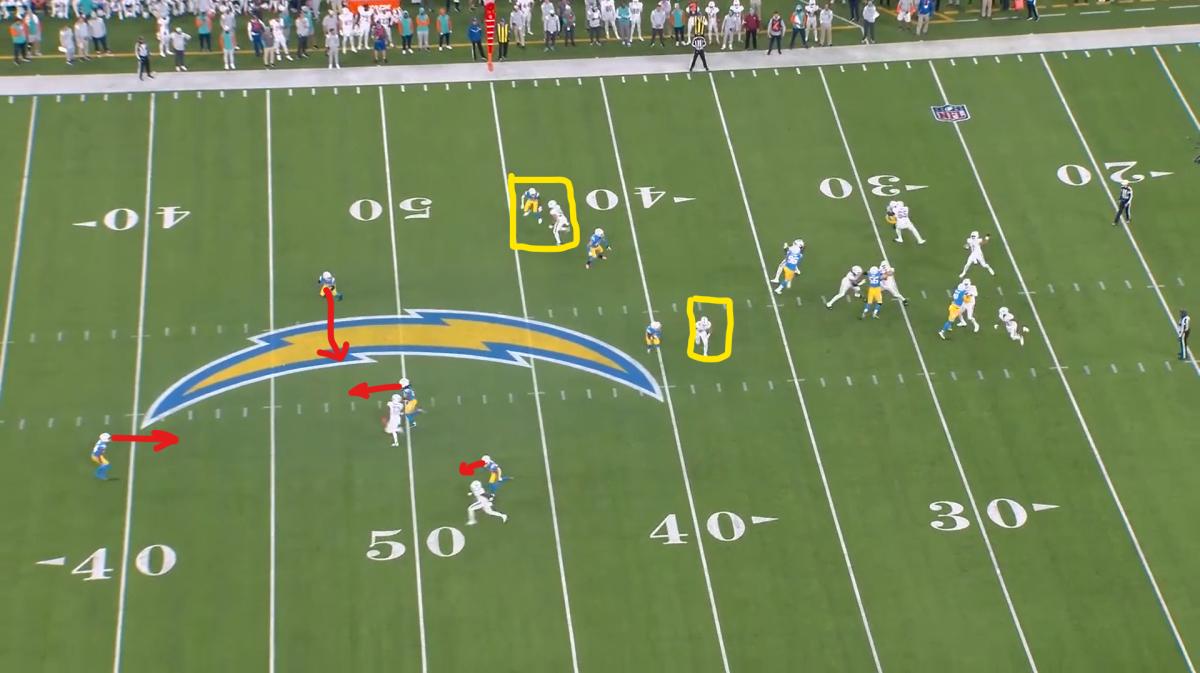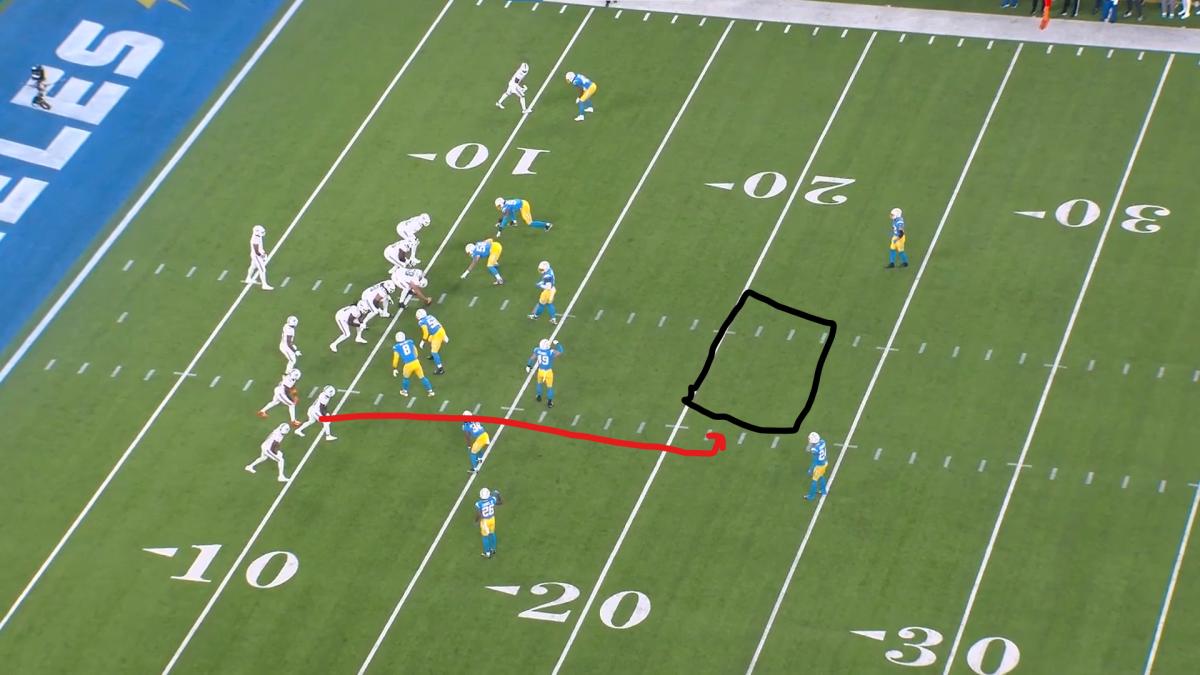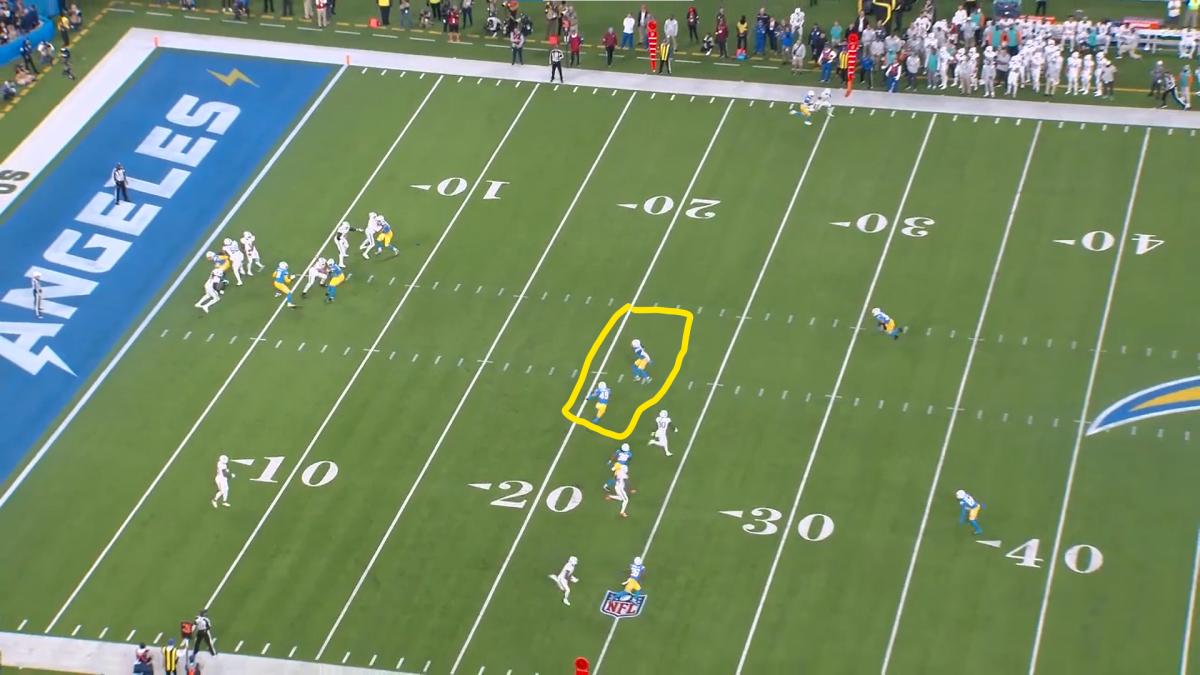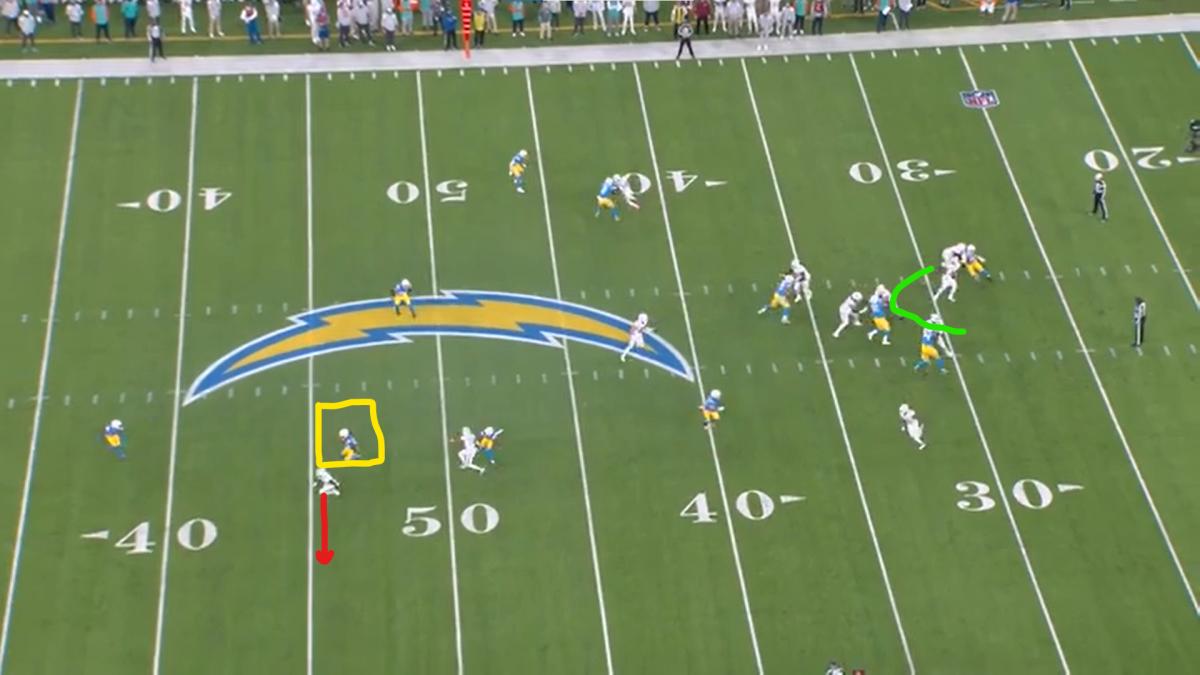Tackling the Tua Issues and How to Fix Them

The Miami Dolphins offense and quarterback Tua Tagovailoa have had their first speed bump in quite a while in the past two weeks.
In each of the team’s back-to-back losses to the San Francisco 49ers and Los Angeles Chargers, Miami’s offense scored just 17 points, which is one point higher than their season-low 16-point output against the Minnesota Vikings. However, the team was missing Tagovailoa and three-time Pro Bowl left tackle Terron Armstead for that contest.
As for Tagovailoa specifically, his numbers have taken a considerable dip in the past two weeks as well. He completed a career-low 35.7 percent of his passes against the Chargers, and he threw two interceptions for just the second time this season against the 49ers.
We’ve decided to dive into the film to see how teams are making Tagovailoa’s life harder and what he can do to turn things around this week against the Bills.
What Miami’s Offense Does Well
First, it’s important to establish what Miami’s offense and Tagovailoa were doing well before the last two games. Coming into the game against the 49ers, no quarterback in the NFL targeted the intermediate area of the field more than Tagovailoa, according to NextGen Stats.
Tagovailoa was killing opposing teams on curls, in-breakers, slants and stop routes in the middle of the field. The reason those routes were so successful prior to the last two weeks was that McDaniel and Tagovailoa embraced a core concept of the Air Raid offense into Miami’s.
Instead of asking Tagovailoa to throw the ball to receivers, he was asked to target open space and trust his receivers would be there to make the catch. This makes use of Tagovailoa’s stalwart anticipation and accuracy while limiting his arm strength weakness.
The combination of middle-of-the-field targets and the use of Air Raid concepts — among other things — allowed Tagovailoa to sit atop the NFL’s passer rating leaderboard for many weeks. Now, he’s lost the top spot to Philadelphia’s Jalen Hurts.
---------------------------------------------------------------------------
---------------------------------------------------------------------------
How Defenses Countered
There seems to be a blueprint on how to limit Miami’s hyper-efficient offense. Let’s look at the Chargers' game plan from Sunday night and see how they went after Tagovailoa.
The Chargers’ plan can be summed up in two general steps. First, they used a lot of press coverage at the line of scrimmage, especially against Tyreek Hill. Los Angeles allowed just one completion on eight targets while in press coverage on Sunday night, per NextGen Stats.
The Chargers utilized a heavy amount of press coverage to disrupt the timing of the Dolphins offense.
— Next Gen Stats (@NextGenStats) December 12, 2022
Chargers in Press Coverage (Week 14):
🔹 35% of detached routes (season-high)
🔹 Allowed just 1 completion on 8 targets#MIAvsLAC | #BoltUp pic.twitter.com/NCmGBt6zWn
The reason press coverage is so effective against the Dolphins is because of how much Tagovailoa and the passing game rely on timing. Remember Tagovailoa is throwing to spots, not receivers, a lot of the time. So, if the receivers aren’t in the right spot at the right time, it often leads to an incompletion.
The physicality of that press coverage disrupted Tagovailoa’s timing with his receivers.
Step two of the Chargers' plan was to crowd the middle of the field and hedge their bets Tagovailoa wouldn’t throw the ball outside the numbers.

This play came at the beginning of the second half but was an important benchmark for the Chargers’ game plan. It’s important to note the Chargers’ defensive backs (noted in red) playing with inside leverage.
This means their hips and eyes are toward the middle of the field. In fact, all four Chargers’defenders have their eyes fixed on the deep middle part of the field. They know that’s where Tagovailoa likes to throw the ball.
There’s no open window to throw this pass, but Tagovailoa tries to hit Hill (the outside WR) on his in-breaking route, and it predictably lands incomplete. Tagovailoa needed to come off those routes and target Alec Ingold and Durham Smythe (both highlighted in yellow), who have one-on-one coverage underneath.

This play is from much earlier in the game, but it shows another way the Chargers (this is what the 49ers did a lot too) crowed the middle of the field. This picture shows the route Hill is running and the window Tagovailoa is targeting.
The Dolphins have made a living of throwing the ball right over the head of linebackers and in front of safeties this season, but this time the Chargers dropped both Drue Tranquill (49) and the linebacker to his right (Kenneth Murray) immediately off the snap.
They even used Tranquill to chip Hill as he was getting into his route to mess up the Dolphins' timing.

Those dropping linebackers (marked in yellow) completely closed Tagovailoa’s throwing window, but he threw the ball anyway. Murray got both his hands on what should have been an interception but ended up dropping it.
How Can Tagovailoa and the Dolphins Counter?
The solution for the Dolphins and Tagovailoa is actually quite simple — in theory. In execution, it might be a little more difficult.
The most important thing is for Tagovailoa to do a better job going through progressions. Throughout the 49ers game and the Chargers game, Tagovailoa threw into covered windows without checking to see if the window was actually open.
Good defenses lie about what they’re going to do post-snap, and Tagovailoa needs to do a better job identifying post-snap movement going forward.
The other adjustment is to start throwing the ball outside the numbers more often. McDaniel started drawing up some outside breaking routes on Sunday night, but Tagovailoa didn’t hit them.

This play late in the game Sunday is a great example of Tagovailoa seeing, but not throwing an outside-breaking concept.
The Chargers cornerback had inside leverage right off the snap (attempting to cut off middle-of-field access), which means anything breaking to the sideline will be open. Tagovailoa has time in the pocket.
All he needs to do is step up and drive this ball outside the numbers. But when he does step up, he decides to pull the ball down and run instead.
Tagovailoa will need to start hitting these types of throws to keep defenses honest going forward.
All of this is not to say Tagovailoa’s play is the only reason Miami’s offense has struggled. The Dolphins’ running game has been mostly underwhelming this season, and Miami’s receivers struggled to generate separation against press coverage Sunday night.
Additionally, McDaniel will need to make more play-calling adjustments to deal with teams pressing Miami’s receivers and clogging the middle of the field.
Like everything, it’s a team effort. However, the play of the quarterback goes a long way toward how successful any plan can be.
---------------------------------------------------------------------------
Thanks for reading. Make sure to bookmark this site and check back daily for the latest Dolphins news and analysis year-round. Also, you can follow me on Twitter at @PoupartNFL, and that's where you can ask questions for the regular All Dolphins mailbags. You also can ask questions via email at fnalldolphins@yahoo.com.
